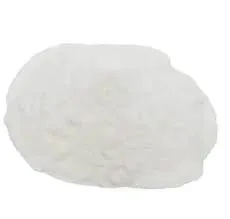
11-р сар . 30, 2024 01:31 Back to list
hpmc for gypsum
HPMC for Gypsum Enhancing Performance and Quality
Hydroxypropyl Methylcellulose (HPMC) has increasingly become an essential additive in various construction materials, particularly in gypsum-based products. The incorporation of HPMC in gypsum formulations has significantly improved the performance characteristics, offering enhanced workability, water retention, and adhesion. This article explores the properties of HPMC and its critical role in the gypsum industry.
What is HPMC?
HPMC is a semi-synthetic polymer derived from cellulose, a naturally occurring organic polymer. Its modifications allow it to possess unique properties that make it suitable for various applications, especially in construction materials. HPMC is widely recognized for its non-toxic nature, making it safe for use in residential and commercial settings.
Benefits of HPMC in Gypsum
1. Improved Workability One of the primary advantages of adding HPMC to gypsum products is improved workability. The addition of HPMC enhances the flow and spreadability of gypsum plaster, allowing for easier application. This is particularly beneficial for professionals working in construction, as it can lead to significant time savings during the installation process. The smoother consistency also aids in achieving a more uniform finish, minimizing the occurrence of imperfections.
2. Water Retention Another critical property of HPMC is its ability to retain water. Gypsum-based materials require sufficient water to hydrate properly. HPMC acts as a water-retaining agent, preventing premature evaporation of water during the application phase. This extended open time allows workers to manipulate the plaster more effectively before it sets, improving the overall quality of the finish. Better water retention also contributes to the strength and durability of the final product.
3. Adhesion and Bonding Gypsum products often require strong adhesion to surfaces to ensure long-lasting performance. HPMC enhances the adhesive properties of gypsum plaster, allowing it to bond more effectively to various substrates. This improved adhesion minimizes the risk of delamination and cracking, ensuring that the final installation withstands daily wear and tear.
hpmc for gypsum

4. Enhanced Durability The addition of HPMC contributes to the overall durability of gypsum products. By improving the overall structure of the material, HPMC helps to reduce issues such as shrinkage cracking and brittleness. Gypsum products modified with HPMC can better withstand fluctuating environmental conditions, maintaining their integrity over time.
5. Workability in Different Conditions HPMC allows gypsum formulations to maintain improved workability under various temperature and humidity conditions. This flexibility is valuable for construction projects, as it enables gypsum finishes to be applied in diverse environments without compromising performance.
Applications in the Gypsum Industry
HPMC finds extensive application in various gypsum products, including gypsum plaster, wallboarding, and lightweight concrete mixtures. Manufacturers utilize HPMC in their formulations to meet the specific needs of the market, such as creating products that offer a balance between performance and cost-efficiency.
Furthermore, the growing trend toward sustainable building practices has increased the demand for eco-friendly additives like HPMC. As building codes evolve to emphasize environmental responsibility, HPMC's biodegradable nature and non-toxic properties make it a favorable choice for modern construction materials.
Conclusion
In conclusion, Hydroxypropyl Methylcellulose (HPMC) plays a crucial role in enhancing the performance and quality of gypsum-based products. By improving workability, water retention, adhesion, and overall durability, HPMC significantly contributes to the efficiency and effectiveness of gypsum in construction applications. As the construction industry continues to innovate and prioritize sustainability, the use of HPMC will likely increase, solidifying its position as an essential additive in gypsum products. Through its myriad benefits, HPMC is not just a filler; it is a game-changer in the production of high-quality, durable, and high-performing gypsum materials.
-
Versatile Hpmc Uses in Different Industries
NewsJun.19,2025
-
Redispersible Powder's Role in Enhancing Durability of Construction Products
NewsJun.19,2025
-
Hydroxyethyl Cellulose Applications Driving Green Industrial Processes
NewsJun.19,2025
-
Exploring Different Redispersible Polymer Powder
NewsJun.19,2025
-
Choosing the Right Mortar Bonding Agent
NewsJun.19,2025
-
Applications and Significance of China Hpmc in Modern Industries
NewsJun.19,2025







